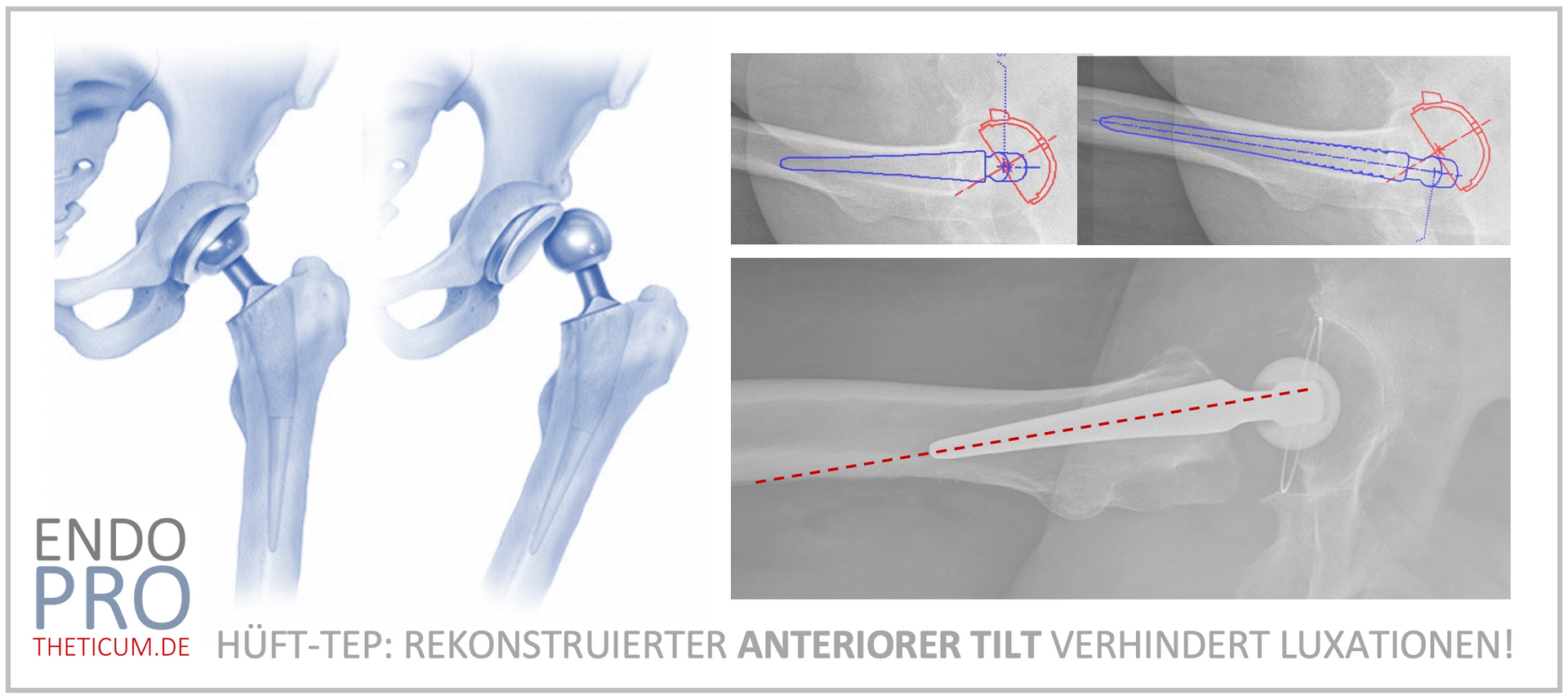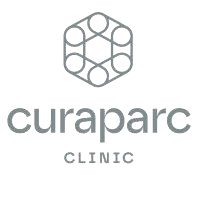Dislocation of the hip prosthesis – short-shaft prostheses offer more safety
How the "anterior tilt" in short-shaft prostheses protects against hip dislocations

Dislocation, i.e. the dislocation of a hip prosthesis (THA), is one of the most feared complications after a hip replacement. However, modern implant technologies such as the short-shaft prosthesis have made a significant contribution to significantly reducing the risk of dislocation. This article highlights the reasons for the reduced risk of dislocation with short-shaft prostheses and explains why they have established themselves as the optimal solution for patients in many cases.
Why dislocations can occur with hip prostheses (THA).
The dislocation of a hip prosthesis can have various causes:
- Suboptimal reconstruction of hip anatomy: Failure to precisely restore the original hip anatomy increases the risk of instability.
- Soft tissue tension: Incorrect tension in the surrounding muscles and ligaments can promote dislocation.
- Movement sequences: Risky movements such as strong bends or rotations can move the prosthesis out of position.
The type of prosthesis and surgical technique play a central role in minimizing these risks.
The advantage of the short-stem prosthesis in reconstructing the anatomy
The short-stem prosthesis differs significantly from longer, traditional straight-stem prostheses. Their design allows a realistic reconstruction of the individual hip anatomy, especially by taking into account the so-called anterior tilt .
(see also: " Short shaft prosthesis: advantages, challenges and success factors ")
What is anterior tilt?
The anterior tilt describes the natural, forward-facing slope of the femoral neck in the area of the hip joint. This inclination ensures biomechanically optimal load distribution and stability in the joint.
With a long shaft that is anchored in the diaphysis of the femur, the ability to precisely replicate this anatomical angle is limited. The diaphysis, i.e. the central tubular part of the femur, forces an alignment along its natural axis, which often does not correspond to the individual inclination of the femoral neck.
Why short-stem prostheses support anterior tilt
The short-shaft prosthesis is primarily anchored in the upper part of the femur, the so-called metaphysis. This starting point allows a more precise adjustment to the natural inclination of the femoral neck. Due to its shorter shaft length, a short shaft does not threaten to break through the bone wall, the so-called cortex, despite this inclination. This will:
- A biomechanically optimal reconstruction of the anatomy is guaranteed.
- Greater stability of the hip joint is possible because the natural axis of movement is retained.
- The risk of dislocation is minimized because the femoral head is in the correct position in relation to the hip socket.
Straight shaft vs. short shaft: Why the difference is crucial
Longer, straight shafts require anchoring in the diaphysis. This has several disadvantages:
- Biomechanical conflict: The rigid alignment of the shaft often contradicts the natural inclination of the femoral neck.
- Increased risk of dislocation: The non-anatomical alignment creates instability in the joint.
- More soft tissue damage: When implanting a long stem, more bone and soft tissue often have to be removed, which makes healing more difficult.
In contrast, short-shaft prostheses maintain individual geometry and ensure functional reconstruction of the hip.
Short-shaft prostheses: Less invasive, more safety
The shorter length of the short-shaft prosthesis not only enables better anatomical adaptation, but also a less invasive surgical technique. This will:
- The surrounding tissue and muscles are spared, which accelerates postoperative mobility.
- The bone structure is spared: This makes subsequent revisions easier if necessary.
(see also: " Only 90 degrees of flexion after total hip replacement: Is that really necessary? "
Minimize dislocations in hip prostheses – conclusion
The short-shaft prosthesis has proven to be particularly safe and effective in hip surgery, especially when it comes to reducing the risk of dislocation. Due to their ability to take the anterior tilt into account and precisely replicate the hip anatomy, they set new standards in endoprosthetics. Patients benefit from more stability, fewer complications and a faster recovery. This type of prosthesis can be optimally inserted in specialized centers that use the most modern surgical techniques such as AMIS or ALMIS.
The use of short-shaft prostheses brings a significant increase in quality of life for many patients - with maximum safety and a new freedom of movement without pain.
MAKE AN APPOINTMENT?
You are welcome to make an appointment either by phone or online .



























